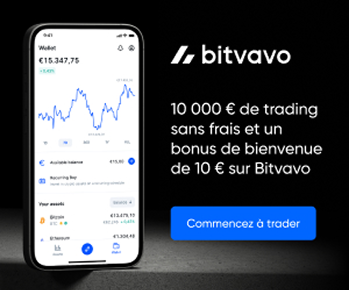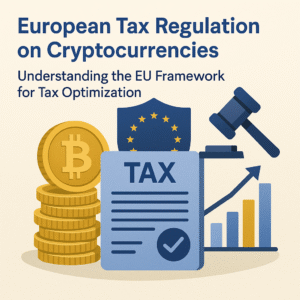Comprehensive Analysis of Blocknet (BLOCK): Functionality, Price, and Outlook
Introduction & SEO Hook
Blocknet (BLOCK) is a cryptocurrency focused on blockchain interoperability, aiming to create an « Internet of blockchains. » This project enables various blockchains to communicate and exchange data in a decentralized manner. In this analysis, we will explore how Blocknet works, its utility, history, use cases, and investment outlook.Key takeaways
Key Takeaways:
- Short-Term Volatility: BLOCK’s price is subject to significant fluctuations, influenced by market demand and technological developments.
- Key Influencing Factors: Adoption of interoperable solutions, partnerships with other blockchains, and regulatory advancements.
- Long-Term Growth Potential: Strong potential in the Web3 ecosystem due to its ability to connect different blockchains.
Overview of Blocknet (BLOCK)
- Symbol: BLOCK
- Category: Blockchain Interoperability / Decentralized Infrastructure
- Core Function: Enable decentralized communication and data exchange between different blockchains.
Platforms to buy blocknet
How Does Blocknet Work?
Blocknet relies on a decentralized architecture that enables interoperability across blockchains through key components:- XBridge: Allows decentralized exchanges between different cryptocurrencies directly from users’ wallets.
- XRouter: Enables communication between dApps and blockchains, granting access to data from different chains.
- XCloud: Provides a decentralized microservices network, allowing developers to access services hosted on various nodes.
- Blockchain Type / Consensus: Proof-of-Stake (PoS), where service nodes are rewarded in BLOCK for network participation.
- EVM Compatibility: Not natively compatible, but bridges are under development to improve interoperability with Ethereum.
- Technical Features: Cross-chain interoperability, decentralized exchange functionality, and API-based access to decentralized services.
- Payment of transaction fees on the network.
- Rewarding service nodes for their contributions.
- Participation in network governance.
4. Project History and Origins
- Launch Date: October 20, 2014
- Geographic Origin: A decentralized project with a global community.
- 2014: Creation of Blocknet and initial trading offer on Bittrex.
- 2018: Release of Whitepaper version 1.0.
- 2021: Migration of the cross-chain infrastructure to Avalanche to improve scalability.
Founders and Team
Founding Team:
- Dan Metcalf: Co-founder, involved in the development of the project’s infrastructure.
What Makes [Nom cryptomonnaie] Unique?
Unique Features of Blocknet
Innovative Use Cases:- Decentralized Exchanges: Thanks to XBridge, users can swap cryptocurrencies directly from their wallets, without intermediaries.
- Interoperable Applications: Developers can build dApps that interact with multiple blockchains via XRouter.
Unique Value Proposition:
Blocknet distinguishes itself through its ability to connect different blockchains in a decentralized manner, offering infrastructure for truly interoperable applications. This approach promotes a more integrated and collaborative blockchain ecosystem.

Comparison With Similar Projects:
- Polkadot: Focuses on creating specific parachains, while Blocknet offers broader interoperability through decentralized APIs.
Conclusion and Future Outlook
Blocknet is a promising solution for blockchain interoperability—a major challenge in the cryptocurrency ecosystem. By facilitating communication between different chains, Blocknet paves the way for more robust and integrated decentralized applications. As Web3 evolves and the demand for interoperable solutions grows, Blocknet could play a key role in the future of blockchain technology.
7. SEO-Ready FAQ
What is the purpose of the BLOCK token? BLOCK is used to pay transaction fees on the Blocknet network and to reward service nodes for their participation. Is it a good investment? Blocknet offers a unique proposition in blockchain interoperability, but like any cryptocurrency, the investment carries risks and depends on market dynamics. How does it differ from Polkadot? Polkadot uses parachains for interoperability, while Blocknet connects blockchains through decentralized APIs like XRouter and XBridge. Where can I store the BLOCK token? BLOCK can be stored in wallets compatible with the Blocknet network, such as the official Blocknet wallet. Is the project secure? Blocknet uses a Proof-of-Stake consensus mechanism and decentralized systems to ensure network security and resilience.Disclaimer :
Trading is risky and you may lose all or part of your capital. The information provided does not constitute financial advice and/or an investment recommendation
Top-Rated Platforms to Trade Crypto
Explore Our Financial Views on the Market
Crypto News & Insights
Digital Assets Forum 2026 returns to
The Digital Assets Forum (DAF), one of Europe’s most respected...
Blockchain and Cryptocurrency Conference (B2C’ 2025):
The Blockchain and Cryptocurrency Conference (B2C’ 2025) is scheduled for...
European Tax Regulation on Cryptocurrencies: Understanding
The regulation of the cryptocurrencies market in the European Union...













